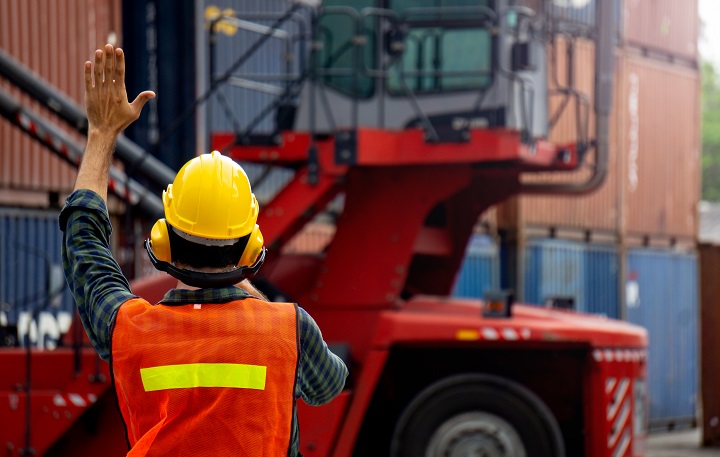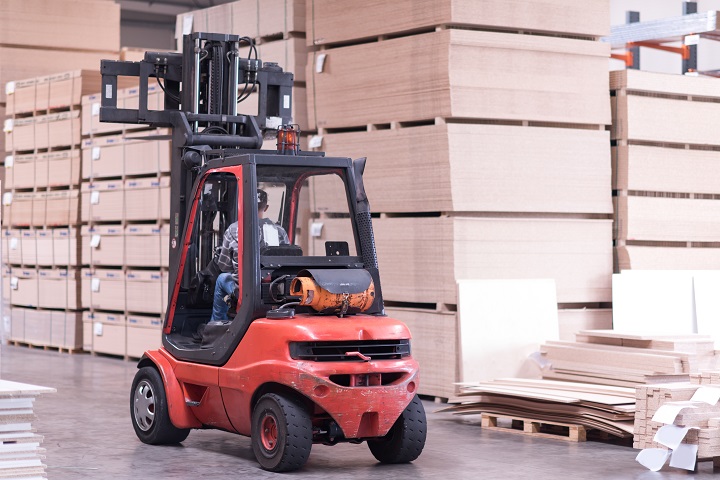Revolutionizing Warehousing: Exploring Industrial Material Handling Solutions for Enhanced Efficiency and Safety
In the dynamic landscape of warehouses and third-party logistics (3PL) facilities, the heart of seamless operations lies in effective material handling. Industrial material handling solutions have evolved to become the backbone of these facilities, playing a pivotal role in ensuring not only efficiency but also safety and organization. So, let’s delve into the nature of warehouses and 3PL facilities, emphasizing the critical importance of material handling. Additionally, I will explore the diverse types of material handling equipment available and how they contribute to the trifecta of safety, efficiency, and organization within these industrial spaces.
The Nature of Warehouses and 3PL Facilities
Warehouses and 3PL facilities serve as the central hubs for the storage, distribution, and management of goods. These spaces are characterized by vast expanses filled with diverse products, varying in size, weight, and fragility. The efficiency of these facilities directly impacts the supply chain, influencing the speed and accuracy with which products reach their destinations.
Volume and Variety
Warehouses handle a vast volume and variety of goods, ranging from small items to large, bulk commodities. 3PL facilities often manage products from multiple clients, further increasing the complexity of inventory management and material handling.
Time Sensitivity
Timely order fulfilment is critical in meeting customer expectations. Efficient material handling directly impacts the speed at which products can be picked, packed, and shipped.
Safety Considerations
The nature of industrial spaces involves the movement of heavy loads and machinery, necessitating stringent safety measures to protect both employees and inventory.
Importance of Material Handling in Warehouses and 3PL Facilities

Enhanced Efficiency
Material handling equipment streamlines processes, reducing manual labour and accelerating the movement of goods. Automation and mechanization contribute to faster loading, unloading, and order picking, optimizing overall operational efficiency.
Improved Safety
Material handling equipment reduces the risk of manual handling injuries by mechanizing tasks that involve lifting and carrying heavy loads.
Automated systems are designed with safety features, minimizing the potential for accidents and injuries in the workplace.
Optimized Organization
Efficient material handling ensures systematic organization of inventory, preventing misplacements and minimizing the chances of errors in order fulfilment. Proper organization enhances accessibility, making it easier to locate and retrieve products, ultimately improving overall warehouse functionality.
Types of Material Handling Equipment and Their Benefits
Conveyors
- Continuous and automated movement of goods.
- Ideal for transporting items over long distances within a facility.
- Reduces manual labour and speeds up the sorting and distribution process.
Forklifts
- Versatile equipment for lifting and transporting heavy loads.
- Increases efficiency in loading and unloading processes.
- Comes in various types, including counterbalance, reach, and pallet trucks, catering to different warehouse layouts and needs.
Automated Guided Vehicles (AGVs)
- Fully automated vehicles that navigate autonomously through the warehouse.
- Efficient for transporting goods between fixed points.
- Reduces the need for manual labour and enhances safety by minimizing human interaction in high-traffic areas.
Pallet Jacks
- Manual or electric equipment for moving palletized loads.
- Ideal for short-distance transport within a facility.
- Improves the speed and efficiency of moving pallets without needing a forklift.
Shelving and Racking Systems
- Optimizes vertical storage space, maximizing warehouse capacity.
- Facilitates systematic organization and easy retrieval of products.
- Customizable to accommodate varying product sizes and shapes.
Automated Storage and Retrieval Systems (AS/RS)
- High-density storage systems with automated retrieval.
- Reduces the need for manual labour in locating and retrieving items.
- Maximizes storage capacity and enhances overall warehouse efficiency.
Order Picker Lifts
- Designed for efficient order picking at various heights.
- Increases accessibility to products stored on high shelves.
- Enhances the speed and accuracy of order fulfilment processes.
Carton Flow Racks
- Gravity-fed systems for seamless flow of goods.
- Ideal for high-throughput order picking and replenishment.
- Maximizes space utilization and minimizes picking times.
Safety Measures in Material Handling

Training Programs
Comprehensive training for employees on the safe operation of material handling equipment. Ensures that workers are knowledgeable about equipment functionality, potential hazards, and emergency procedures.
Regular Equipment Maintenance
Scheduled maintenance checks to identify and address any issues with material handling equipment promptly. Preventive maintenance minimizes the risk of equipment failure and ensures optimal performance.
Ergonomic Design
Prioritizing ergonomic design in both manual and automated material handling equipment. Reducing physical strain on workers and creating a comfortable and safe working environment.
Clear Signage and Markings
Clearly marked pathways and zones to guide the movement of equipment and pedestrians. Promotes a structured flow of operations and minimizes the risk of collisions.
Use of Safety Barriers
Installation of safety barriers to separate pedestrian and equipment pathways. Prevents accidental collisions and enhances overall warehouse safety.
Conclusion
Industrial material handling solutions have become integral to the seamless functioning of warehouses and 3PL facilities. The dynamic nature of these spaces, coupled with the need for efficiency, safety, and organization, has propelled the evolution of diverse material handling equipment. From conveyors to forklifts and automated systems, each plays a unique role in optimizing operations and contributing to the success of the supply chain.
As the industry advances, integrating smart technologies, automation, and data analytics will further refine material handling processes. Warehouses and 3PL facilities that embrace these innovations stand to gain not only in terms of operational efficiency but also in creating safer and more organized working environments. The future of material handling is one where precision, safety, and efficiency converge to elevate the standards of industrial operations, ultimately shaping the landscape of global commerce.
